If you are a fan of coffee (like me), I am sure you know there’s an array of coffee brewing methods available. Exploring these diverse techniques can transform your home brewing experience and open up a new world of coffee flavors.
You might be familiar with the ubiquitous drip coffee maker or the trendy French press, but there are many other brewing methods to try.
In this article, we will get a good look at different coffee brewing methods. But, fair warning, after reading this article, you may feel like visiting a nearby specialty coffee shop or going on an impulsive buying spree. Let’s dive in!
Please note: This article contains affiliate links, meaning I may earn a commission if you make a purchase by clicking a link. Of course, this comes at no extra cost to you and helps me keep offering readers solid information.

Note: Since we are discussing coffee brewing methods, we are going deep into the different aspects of the entire brewing process. I realize not everything discussed here applies or is attainable to all readers. However, this content is designed to inform and help you make decisions to improve your coffee-making experience. A small change can make a big difference.
Coffee Beans
Freshness
When it comes to coffee beans, freshness is vital. You’ll want to use freshly roasted beans for the best flavor. Ideally, opt for beans that have been roasted within the past two weeks. Look for roast dates on the packaging or buy from a local roaster to ensure the beans are at their freshest.
Roasts
Coffee beans come in different roast levels, affecting coffee’s flavor and strength. Here’s a quick guide to the most common roasts:
- Light Roast: These beans have a light brown color and are high in acidity. They typically have a mild, toasted grain taste with more pronounced origin flavors.
- Medium Roast: A medium brown color, these beans have a well-rounded flavor profile with a balance of acidity, body, and aroma.
- Dark Roast: Dark brown and sometimes with an oily surface, these beans have a bold, smoky flavor and often lower acidity than lighter roasts.
Experiment with different roasts to find the one that suits your taste preferences best.
Read More: Coffee Roasting Stages
Grind Size
The grind size of coffee beans is essential for proper extraction during the brewing process. Using the right grind size for your brewing method ensures a balanced and full-flavored cup of coffee.
- Coarse Grind: For French press, cold brew, and percolator methods.
- Medium Grind: Ideal for drip coffee makers and pour-over brewing.
- Fine Grind: Works best for espresso machines and moka pots.
Invest in a burr grinder for a consistent and even grind to achieve the perfect grind. Avoid using a blade grinder, as it tends to produce uneven particles, which can lead to over- or under-extraction during brewing.
Remember to grind your coffee beans before brewing to enjoy the best flavor possible from your freshly ground coffee. Using whole-bean coffee and grinding it yourself will produce a fresher, more aromatic cup than pre-ground coffee.
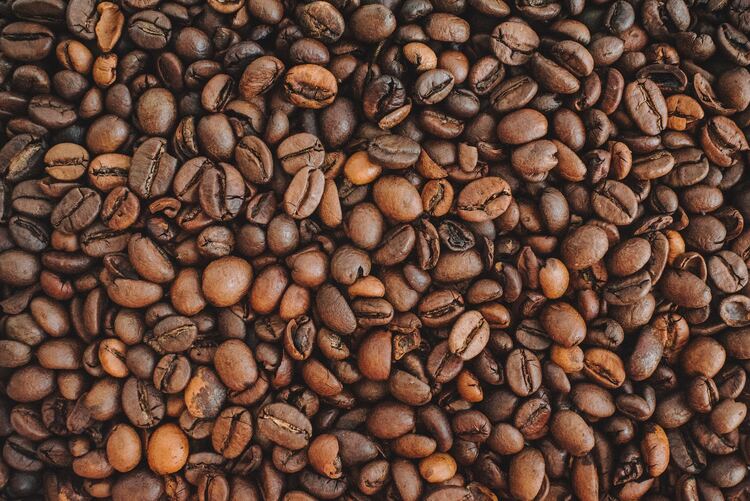
Water for Brewing
Temperature
The temperature of your water can significantly impact the flavor of your coffee. Ideally, you should use water that is between 195°F (91°C) and 205°F (96°C) for optimal extraction. Too hot or cold water may produce bitter, over-extracted, weak, or under-extracted coffee.
Filtered Water
Using filtered water is another essential factor when brewing your coffee. Tap water often contains impurities, minerals, or additives that can alter the taste of your coffee. Consider using a water filter, bottled water, or spring water for a cleaner, smoother taste. Remember that different types of water will produce varying results in your coffee’s flavor.
| Water Type | Characteristics |
| Tap water | Natural source can have minerals |
| Filtered water | Removes impurities from tap water |
| Bottled water | Varies, but generally pure |
| Spring water | Natural sources can have minerals |
Water-to-Coffee Ratio
The water-to-coffee ratio plays a crucial role in determining the strength and taste of coffee. A general rule of thumb is to use a 1:15 or 1:17 coffee-to-water ratio. For every 1 gram of coffee, you should use 15 to 17 grams of water. Adjust this ratio to suit your taste preferences. Experiment with different ratios to find the perfect balance between strength and flavor.
Here’s a quick guideline for brewing:
- 1:15 ratio: Stronger, more intense flavor
- 1:17 ratio: Milder, more balanced flavor
As a friendly reminder, always measure your coffee and water by weight, not volume. This ensures consistency in your brewing process.
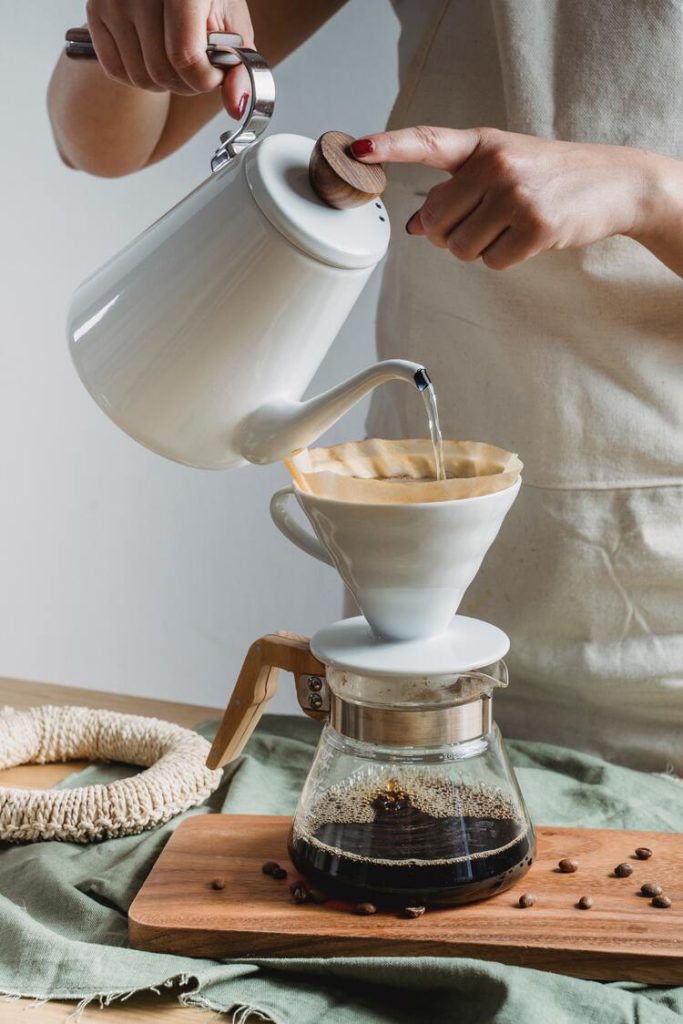
Popular Coffee Brewing Methods
Pour-Over
Pour-over is a popular and straightforward brewing method that allows you to control the water temperature, the speed of brewing, and the amount of coffee extracted. Choose your favorite paper filters and use a gooseneck kettle for precise pouring. Various pour-over devices, such as Chemex, Hario V60, and Kalita Wave, are available. Experiment with different instruments and roasts to find your perfect cup of coffee.
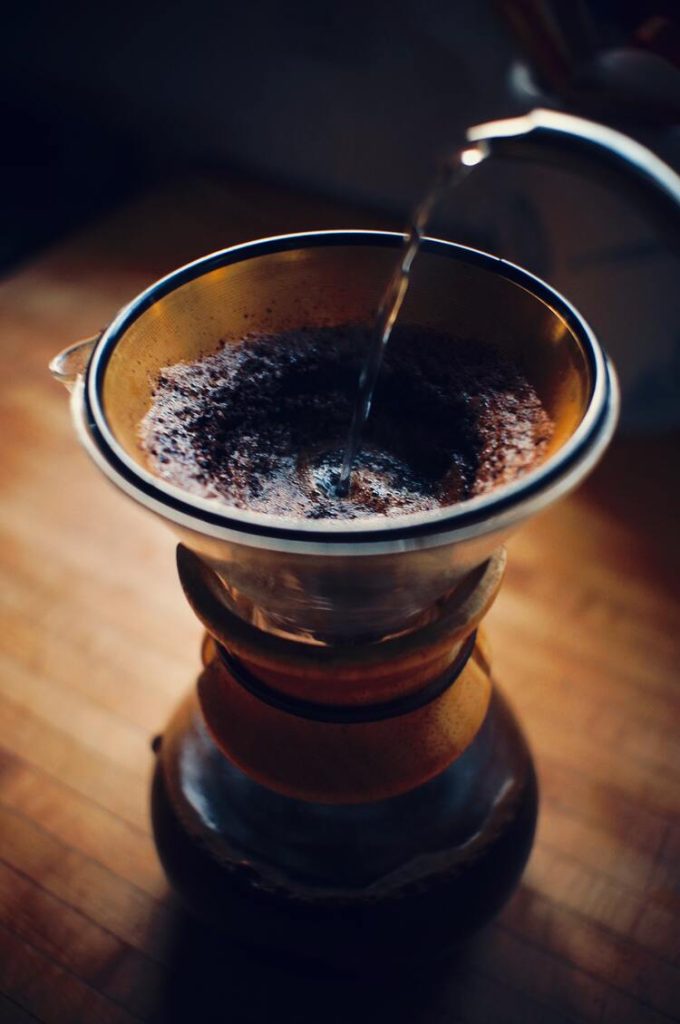
French Press
The French Press is a classic brewing method that brings out bold flavors in your coffee. The brewing process doesn’t require paper filters, so it’s more environmentally friendly. Coarse ground coffee is submerged in hot water, allowed to steep, and then separated by plunging a metal mesh filter. This method makes a rich and full-bodied cup. Just be careful not to over-extract, or your coffee might be bitter.
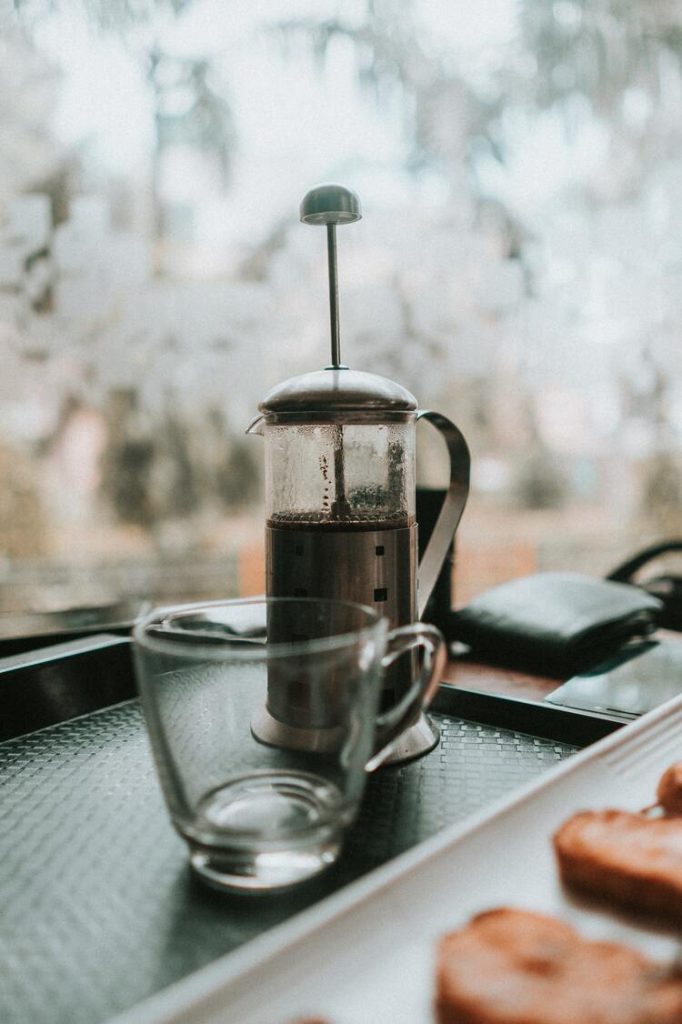
Drip Machine
Drip machines are the most common brewing method in many homes and offices. These convenient coffee makers can brew multiple cups simultaneously, making them perfect for gatherings. Simply add your coffee grounds and water, and let the machine do the rest. Try experimenting with different coffee beans and water-to-coffee ratios to achieve a flavor profile tailored to your taste.
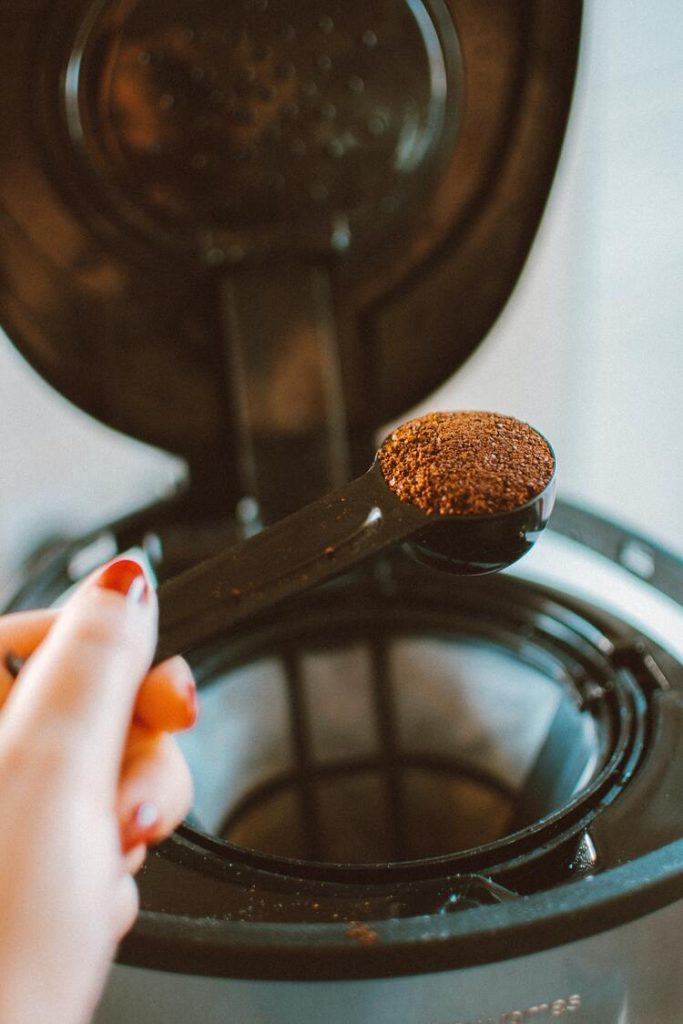
AeroPress
An AeroPress is a compact and portable brewing device. It uses gentle air pressure to extract smooth, rich-tasting coffee. Generally, AeroPress coffee has less acidity and smoother flavors than pour-over methods. Its small size and quick brewing time make it perfect for those on the go or camping trips.
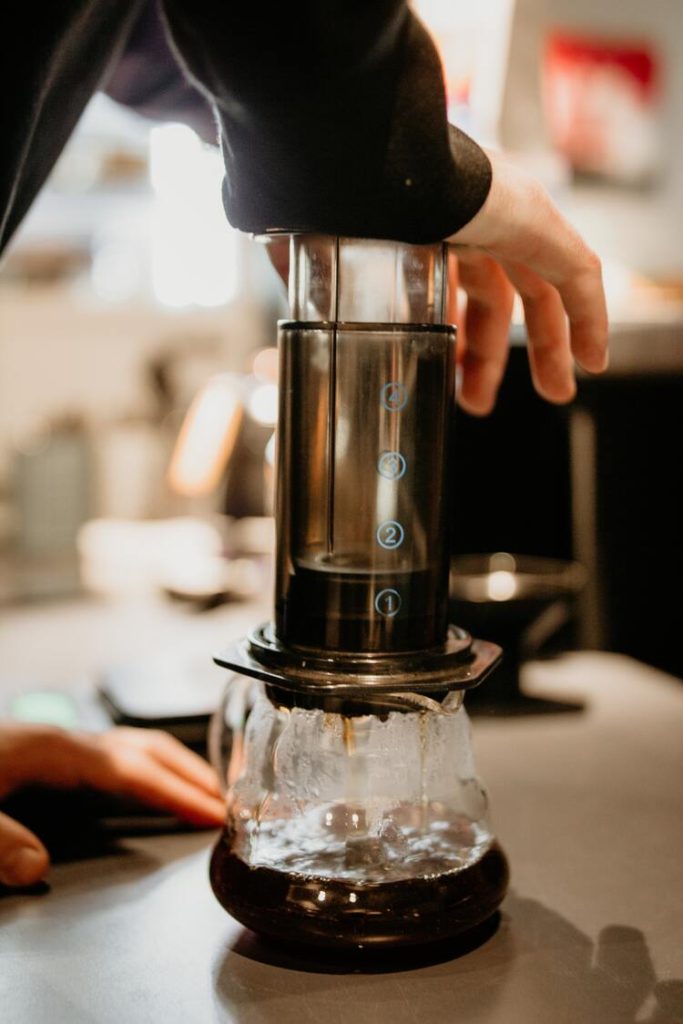
Espresso
Espresso is a strong, concentrated coffee made with an espresso machine. Using finely ground coffee beans and high-pressure, espresso machines create a thick, rich shot of coffee. It’s the basis of many popular coffee drinks like lattes and cappuccinos. The art of making espresso requires practice and skill, but once mastered, it can produce incredibly bold and satisfying coffee.
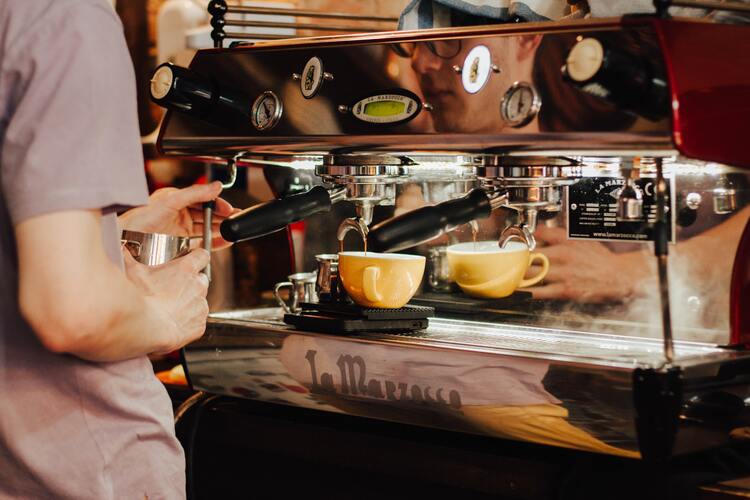
Moka Pot
A Moka Pot is a stovetop brewing method suitable for those who enjoy strong coffee without needing an espresso machine. It uses steam pressure to force hot water through coffee grounds, resulting in a bold and strong flavor. Moka pots come in various sizes and are relatively easy to use. Just be sure to clean them regularly, as leftover oils can negatively impact the taste.
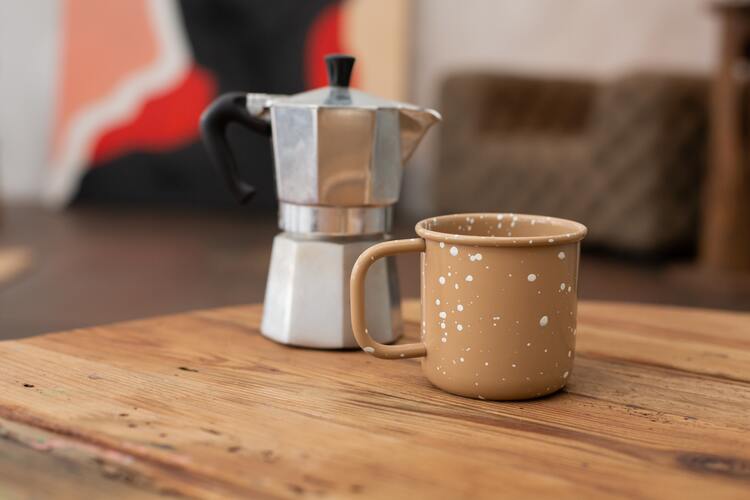
Cold Brew
Cold brew is a refreshing alternative to hot beverages, perfect for enjoying during warm weather. It requires steeping coarse coffee grounds in water for an extended period, typically between 12 to 24 hours. The result is a smooth, low-acidic, and slightly sweet coffee. You can experiment with steeping time and your choice of beans for unique flavors.
Siphon
The siphon brewing method combines art and science in a visually captivating process that results in a clean and flavorful coffee. A siphon coffee maker consists of two glass chambers connected by a tube with a filter. As heat is applied, the water rises into the top chamber, where the coffee grounds are steeped.
Once removed from the heat source, the coffee is filtered back into the bottom chamber. Although it takes more effort and precision, the end result is worth it for coffee enthusiasts seeking a complex and aromatic cup.
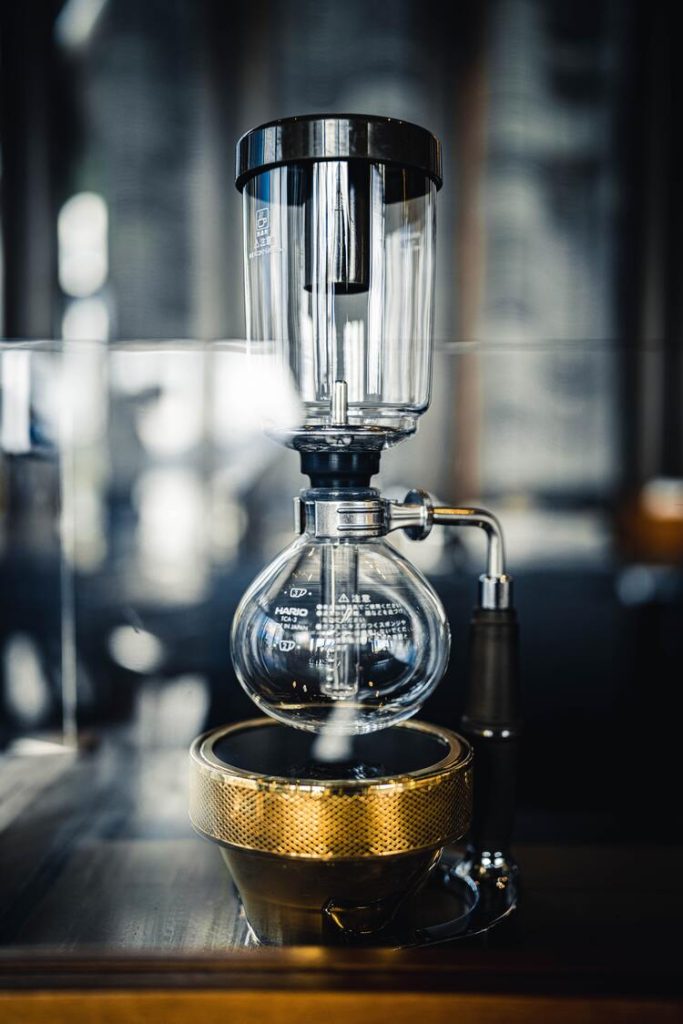
Turkish Coffee
Turkish coffee is a unique method that involves an ultra-fine coffee grind and the addition of sugar and spices. It’s brewed in a special pot called a cezve, allowing the coffee to create a rich, thick foam. The brewing process is quick, but it requires constant attention to avoid overcooking. Turkish coffee offers a strong, bold, and historically enriched experience for coffee lovers.
Single-Serve Coffee Maker
Single-serve coffee makers, like Keurig or Nespresso systems, offer the convenience of making one cup at a time with a simple button push. They use pre-packaged coffee pods or capsules, making them perfect for busy, on-the-go mornings. While not the most customizable or eco-friendly method, single-serve coffee makers are great for quick and effortless caffeine fixes.
Coffee Brewing Methods: Immersion vs Pressure
Pros and Cons
Immersion Brewing is the method where you steep your coffee grounds in hot water for a certain amount of time, as seen in the French Press. The main advantages of this method are:
- Simplicity: It requires very little equipment and technique.
- Control: You can easily adjust the brewing time and coffee-to-water ratio for your desired taste.
However, there are a few downsides to immersion brewing:
- Potential over-extraction: If you let the grounds steep for too long, your coffee may taste bitter.
- Less clear flavor: The coffee oils and fine grounds can pass through the filter, resulting in a murkier taste.
Pressure Brewing, on the other hand, forces hot water through the grounds at high pressure, as in the case of espresso or AeroPress. Benefits of pressure brewing include:
- Richer flavor and body: The pressure extracts more flavors from the coffee grounds, creating a more intense taste.
- Speed: It’s generally faster than immersion brewing methods.
Pressure brewing also has its own set of cons:
- More expensive: The equipment is typically pricier than immersion brewing devices.
- Greater skill required: Pressure brewing may demand more practice to master the technique.
Flavor Differences
In addition to the pros and cons, the flavor profiles of immersion and pressure brewing methods also differ.
Immersion brewing, like the French Press, yields a full-bodied and robust coffee with a distinct flavor. The longer steeping time allows for a greater extraction of the coffee’s natural oils, giving the coffee a richer taste.
On the other hand, pressure brewing, such as with espresso or AeroPress, produces a more intense and concentrated coffee. Due to the shorter contact time between water and grounds, pressure brewing emphasizes the sharp and bright notes of your coffee. This results in a unique flavor profile that captures the essence of the beans’ original character.
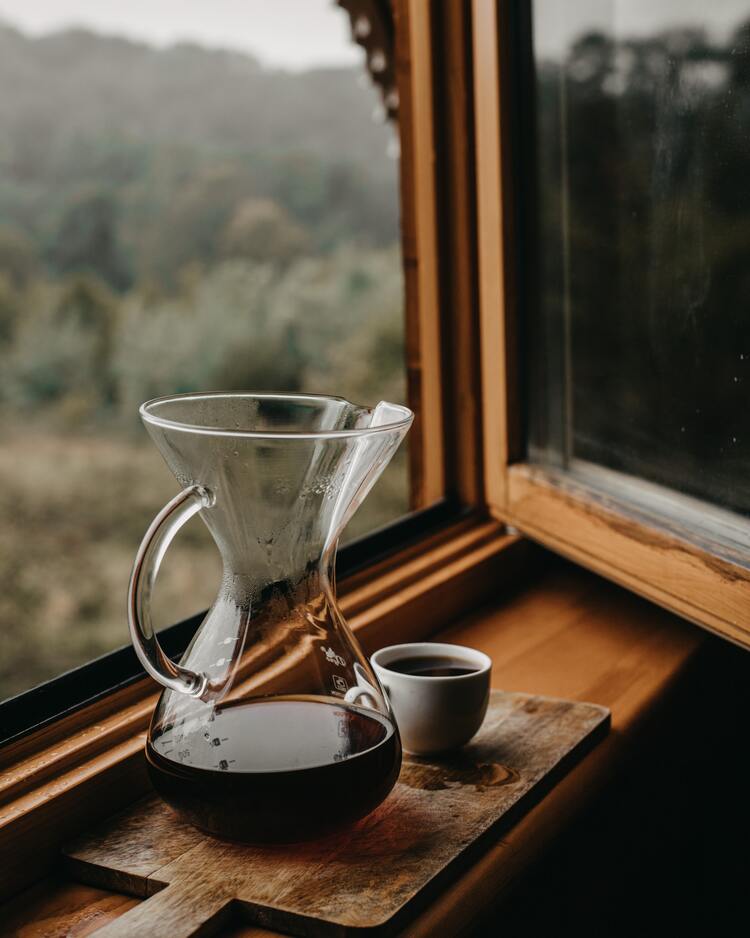
Coffee Additives
Sugars and Sweeteners
There are various ways to sweeten your coffee, and it’s up to your personal preference which one you’d like to use. Some options include:
- Sugar: You can opt for white, brown, or even raw sugar for adding sweetness. Use one teaspoon for a subtle sweetness or two teaspoons if you enjoy sweeter coffee.
- Honey: A natural sweetener with a distinct flavor, honey complements many coffee drinks. Try adding a teaspoon to your next mug for a unique taste.
- Artificial sweeteners: If you’re concerned about calories, consider using a zero-calorie sweetener like stevia, aspartame, or erythritol.
| Sweetener | Calories per teaspoon |
| Sugar | 16 |
| Honey | 21 |
| Stevia | 0 |
Dairy and Non-Dairy Milks
Milk adds a creamy texture to your coffee, be it dairy or non-dairy. Here are some popular choices for lattes and other coffee drinks:
- Whole milk: Provides a rich creaminess to your coffee, enhancing the overall flavor.
- Skim milk: Offers a lighter creaminess, ideal if you’re watching your calorie intake.
- Almond milk: A popular non-dairy option, almond milk adds a nutty flavor to your coffee and is excellent in lattes.
- Soy milk: Another popular non-dairy choice, soy milk is thicker than almond milk and can add a slight sweetness to your drink.
Spices
Don’t be afraid to experiment with adding spices to your coffee to enhance the flavor profile. Here are some ideas to get you started:
- Cinnamon: Sprinkle a dash of cinnamon on top of your coffee or mix it in with your grounds before brewing for a warm and fragrant touch.
- Nutmeg: Use sparingly, as nutmeg can be potent! Just a pinch can add a delightful, slightly sweet flavor to your coffee.
- Cardamom: Popular in Middle Eastern coffee, cardamom adds a unique, spicy-sweet flavor. Try adding a few crushed seeds to your grounds before brewing.

Coffee Brewing Methods: Equipment Care
Taking care of your coffee equipment will greatly improve the taste of your coffee and the longevity of your brewing tools. Let’s discuss some cleaning and maintenance practices.
Cleaning
Cleaning your coffee equipment is essential for maintaining its performance and ensuring that you’re always getting the best tasting coffee. Some aspects to focus on for cleaning are:
- Filters: Whether you’re using a paper filter or a reusable metal filter, it’s important to keep them clean. Rinse metal filters after each use and properly dispose of paper filters.
- Reservoir: The water reservoir in your coffee maker can develop mineral deposits over time, which can impact the brewing process. Clean it regularly by running a mixture of water and vinegar through the machine.
- Brewing methods: Different brewing methods require different cleaning techniques. Keep your French press clean by disassembling and washing all parts after each use, and descale your espresso machine according to the manufacturer’s recommendations.
Maintenance
Taking care of your coffee equipment goes beyond just cleaning the parts; it also involves proper maintenance. A few helpful tips include:
- Inspect and replace parts: Be sure to regularly check the various components of your coffee equipment for wear, and replace them as needed. This can include seals, gaskets, and even the blades of your grinder.
- Stay consistent with your brewing: Your brewing methods should remain consistent, as different techniques require different equipment care. By sticking to a specific brewing method, you make it easier to maintain your equipment in top shape.
Buying Recommendations
If you are interested in trying some of the coffee brewing methods discussed above, here are our top recommendations when it comes to equipment.
Chemex Pour-Over Glass Coffeemaker – Classic Series

Hario Pour Over Coffee Starter Set Coffee Dripper

BAYKA French Press Coffee Maker

Aeropress Original Coffee Press

CASABREWS Espresso Machine 20 Bar


Kendal Glass Tabletop Siphon (Syphon) Coffee Maker

Frequently Asked Questions
What is the best way to make espresso at home?
To make a good espresso at home, invest in a quality semi-automatic or fully automatic espresso machine. A semi-automatic machine allows you to control the process, while a fully automatic model takes care of everything for you. Grind your beans to a fine consistency and use filtered water for best results. Remember to clean your espresso machine regularly to maintain optimal taste.
How does a pour over method change the taste of coffee?
A pour over method, like a Chemex or V60, brings out the coffee’s delicate flavors and aromas. This is due to the controlled brewing process: water is poured onto the coffee grounds in a specific manner, ensuring even extraction. The result is a clean, bright, and flavorful cup that highlights the coffee’s unique characteristics.
What are the advantages of using an AeroPress?
An AeroPress is a compact, portable, and versatile coffee brewing device. It combines immersion and pressure brewing methods, producing a strong and smooth coffee. The AeroPress is easy to clean, travel-friendly, and ideal for single servings. It is also great for experimenting with recipes and brewing variables, like brew time and water temperature.
Which coffee brewing method is best for a strong flavor?
For a strong, bold flavor, try a French press or a Moka pot. The French press uses full immersion to extract coffee’s robust notes, while a Moka pot uses pressure to create a concentrated, espresso-like brew. Both methods emphasize the coffee’s richness and intensity. Adjust the coffee-to-water ratio to achieve your desired strength.
How does a Moka pot differ from a regular espresso maker?
A Moka pot is a stovetop espresso maker that produces coffee through pressure, similar to an espresso machine. However, the pressure in a Moka pot is lower than that in an espresso machine. This results in a brew that is less concentrated and has less crema compared to a true espresso. Moka pots are more affordable and require less maintenance than espresso machines.
What is the impact of brewing time on coffee taste?
Brewing time affects the extraction of coffee flavors and compounds. A short brew time can lead to under-extraction, resulting in a weak, sour taste. A long brew time can cause over-extraction, producing a bitter, strong flavor. Each brewing method has a recommended brewing time to achieve a balanced taste. For instance, a French press should steep for 4-5 minutes, while an AeroPress takes about 1-2 minutes. Experiment with brewing times to find your preferred taste.
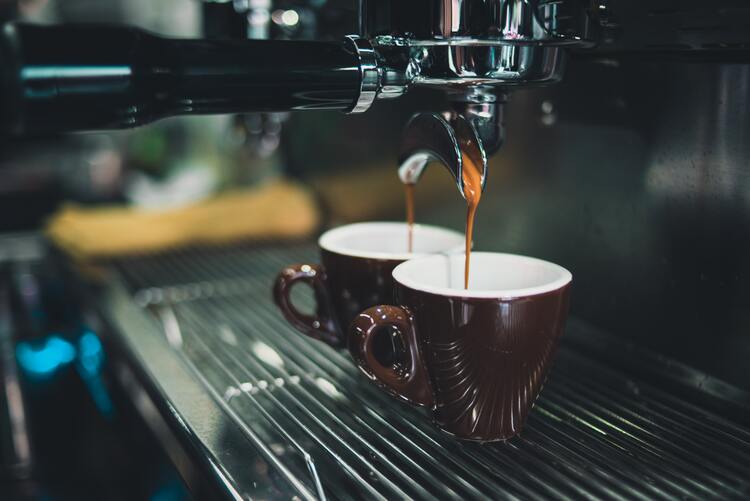
I loved writing this article! There is so much to explore in the world of coffee. Hope you have enjoyed the article and learned something new!
What are your favorite coffee brewing methods?